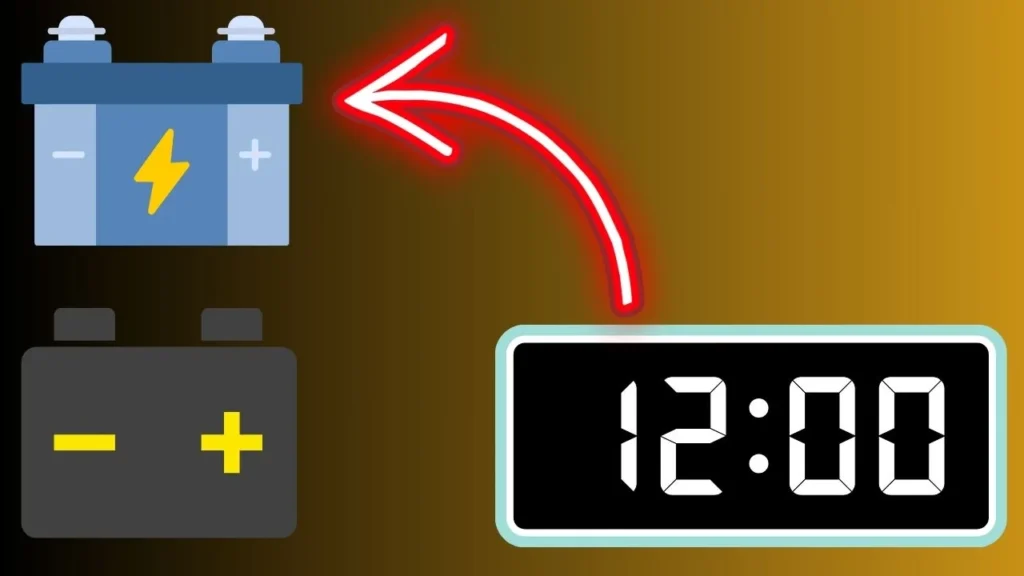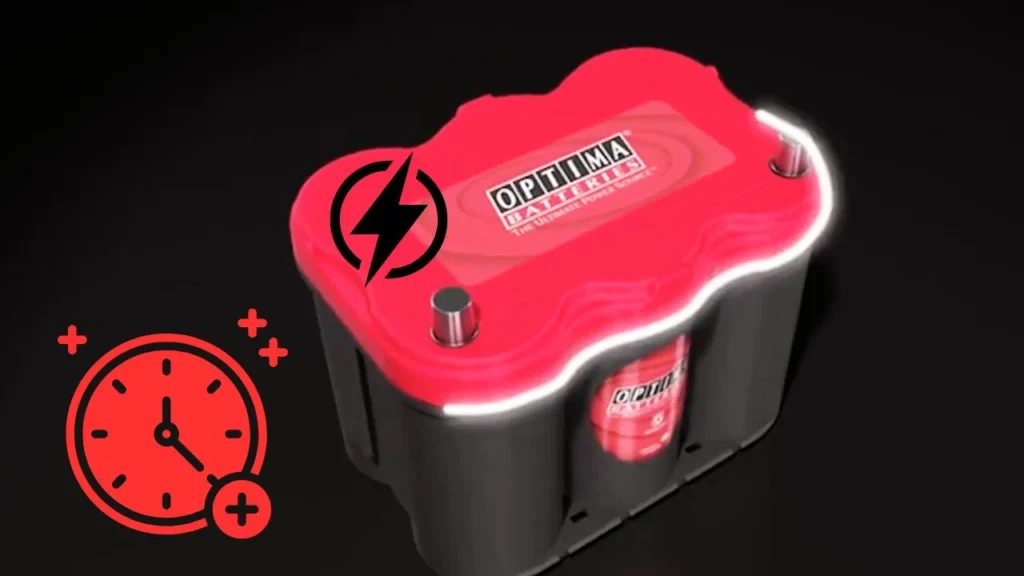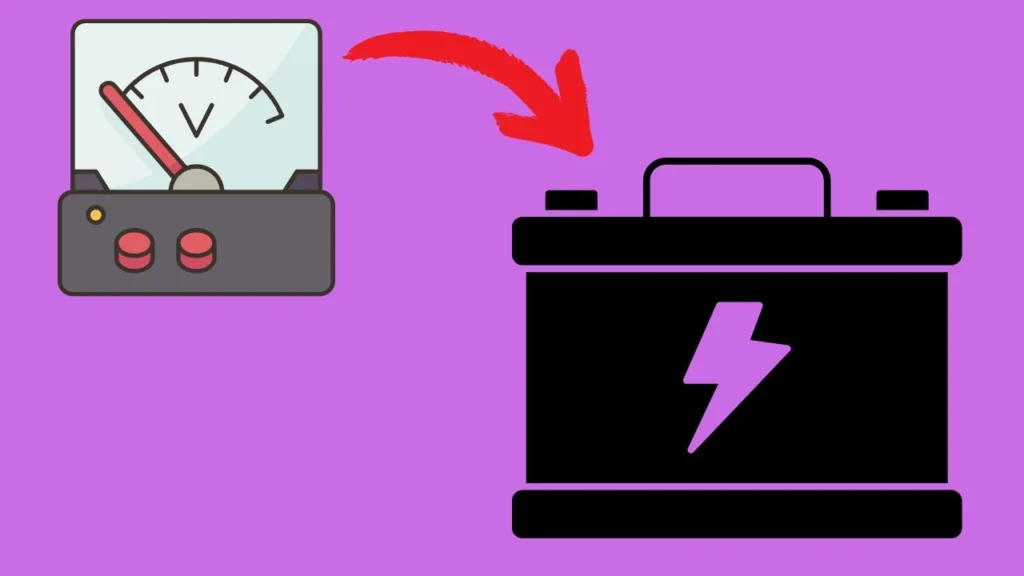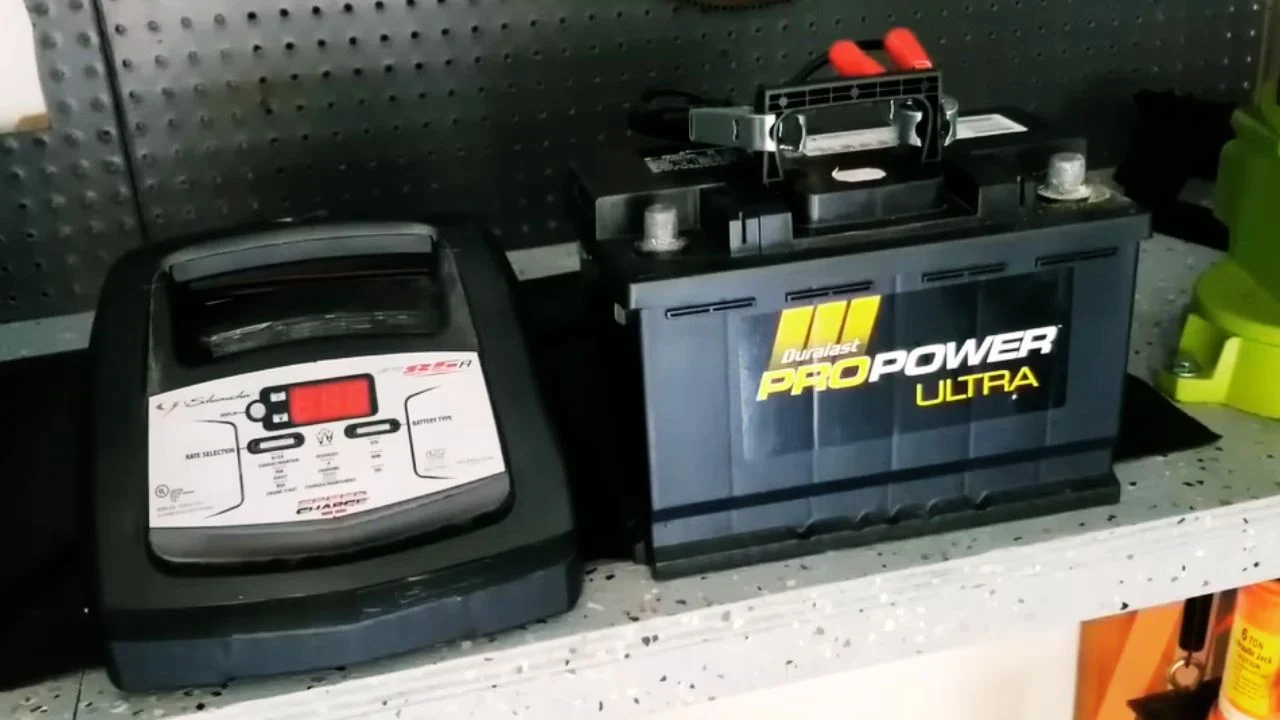When I first started wondering how long to charge car battery with charger I quickly realized there wasn’t a straightforward answer. Every time I’d look it up, I’d find different estimates based on factors like battery type, charger amps, and even how much the battery was discharged. So, I decided to dig deeper and come up with a solution that works for me.
In this article, I’ll walk you through the formula I use to estimate charging times, how different battery sizes affect the process, and what you should keep in mind when choosing a charger. Learn more in our guide on the best trickle chargers for car batteries.
Can Overcharging a Car Battery Damage It?
Yes, overcharging a car battery can cause significant damage. For instance, if a 12-volt battery is charged beyond 14.4 volts for an extended period, it may overheat, leading to electrolyte loss and internal damage. Overcharging can also cause the battery to swell or even fail completely. Modern smart chargers prevent this by switching to a maintenance mode once the battery reaches 100% charge.
However, with a manual charger, you must monitor the voltage closely and disconnect it once the battery reaches around 12.6-12.8 volts at rest. Always match your charger’s output with your battery’s capacity for safe charging. Learn more in our guide on the best solar car battery chargers.
1. Charging Time Formula Explaination

When I started trying to figure out how long it would take to charge my car battery, I needed a simple and reliable way to calculate it. After a bit of digging, I came up with a formula that works for most situations. Here’s how I do it: Learn more in our guide on the best portable car battery chargers.
The Formula You Need
The formula I use to estimate charging time is pretty straightforward:
Charging Time = (Amp Hours of Battery ÷ 0.8) ÷ Charging Amps
Let’s break it down:
- Amp Hours of Battery: This is the total capacity of your battery, essentially how much energy it can store.
- Charging Amps: This is how much current (in amps) your charger delivers to the battery per hour.
- 0.8 Factor: Since no charger is 100% efficient, we use 0.8 to account for losses in the charging process.
Example Calculation
To show how this works, let’s run through an example. Let’s say you have a 40 amp hour battery and a 4 amp charger. To estimate the charging time, I’d do the following:
(40 ÷ 0.8) ÷ 4 = 12.5 hours
So, in this case, it would take around 12.5 hours to charge the battery from 0% to 100%. This formula gives me a reliable estimate every time.
Why This Formula Works
The beauty of this formula is that it takes into account the most important variables battery size and charger power while factoring in the inherent inefficiency of most chargers. It’s an easy way to estimate without having to make complex calculations or guesswork. Learn more in our guide on the best recommended car battery chargers.
2. Battery Types & Charging Times

When I started experimenting with different car batteries, I realized that charging times can vary a lot depending on the size of the battery. For example, smaller batteries, like those used in lawnmowers, charge much faster than the larger ones in cars. To help clarify this, I came up with a basic way to estimate charging times for different battery sizes based on the typical discharge. Learn more in our guide on the best portable electric car battery chargers.
Let’s break it down with some examples:
- A 32 amp hour battery: When it’s about 50% discharged, it’ll take roughly 13.5 hours to charge.
- A 12 amp hour battery: This one needs about 5 hours for a 50% charge.
- A smaller 6 amp hour battery: It will charge in about 2.5 hours when it’s 50% discharged.
The key here is that the formula works under the assumption that the battery is at 50% discharge. This means you’re only replacing half the battery’s capacity, making it easier to estimate how much time it’ll take to reach full charge. So, for a 32 amp hour battery, you’re really only charging 16 amp hours, which gives you a more manageable number for estimation.
By using these examples, I found a practical way to get a pretty solid idea of how long I would need to leave my battery on the charger without needing to wait around for hours just guessing.
3. Why Your Car Battery Takes Longer to Charge (The Secret Phases)

When I first charged my car battery, I thought it would be a quick process. However, I quickly learned that there’s a lot going on behind the scenes that affects how fast or slow the battery charges. There are actually three phases in the charging process: Bulk, Absorption, and Float. Let’s break each of them down so you can understand why your battery isn’t charging as quickly as you expect.
1. The Bulk Phase: Fast and Furious Charging
- The bulk phase is the first 80% of your battery’s charging time. During this phase, the charger delivers as much power as it can to the battery, rapidly increasing the charge. It’s the fastest part of the process, bringing the battery up to around 80% full.
- This is the stage where you’ll see the most noticeable progress.
2. The Absorption Phase: Slowing Down for Safety
- Once your battery reaches around 80%, things start to slow down. The charger reduces the power it sends to the battery to avoid overcharging. This is the absorption phase, and it takes longer because the battery is nearly full and requires a more controlled flow of electricity.
- At this point, my charger might show a slight decrease in charging speed what was once 1.5 amps per hour might now be closer to 1.2 amps.
3. The Float Phase: Trickle Charge to Finish Up
- In the final phase, the float phase, the charger provides a small, steady amount of power to maintain a full charge. This phase is the slowest, but it’s necessary to keep the battery topped off without risking overcharging.
- While this phase doesn’t add much energy to the battery, it ensures your car battery stays at 100% without causing damage from overcharging.
Why the Slower Charging in the End Matters
Understanding these phases helped me realize why the final stretch of charging takes so much longer than the first. In the earlier stages, you’re just putting a lot of power in quickly, but as the battery gets fuller, the process slows down. This isn’t a flaw; it’s just the natural way batteries work. By knowing about these phases and how they impact how long to charge car battery with charger, I was able to set more realistic expectations for my battery charging time.
4. How to Understand Cold Cranking Amps & Reserve Capacity for Faster Charging

- Cold Cranking Amps (CCA) tells you how much power your battery can give to start your car, especially in cold weather.
- Reserve Capacity is how long your battery can keep powering things before it runs out of charge.
- To estimate charging time, you need to convert CCA and Reserve Capacity into amp hours.
- For example, a battery with 315 CCA and 60 reserve capacity is about 46.2 amp hours.
- Using the formula, it would take about 19.25 hours to charge half of the battery’s capacity.
- For a full charge, it would take around 38.5 hours.
5. Estimating Your Battery’s Charge

Using a Voltmeter for Accuracy
Whenever I’m unsure of my car battery’s charge level, I grab a voltmeter. It’s the quickest way to check how much charge is left, and it saves me from any guesswork. By measuring the voltage between the two terminals, I can get a good idea of my battery’s current charge.
Cross-Referencing with a Chart
Once I have the voltage reading, I cross-reference it with a chart that tells me the approximate percentage of charge. This gives me a clear understanding of whether I’m dealing with a nearly dead battery or one that’s more than halfway charged.
Adjusting Charging Time Estimates
Knowing the percentage helps me adjust my expectations for charging time. For example, if my battery is at 40%, I know it will take longer to charge. With this method, I’m always prepared for how long the process will take, whether I’m using a small or larger battery.
Final Wrap-Up
So there you have it! Now that you know how to estimate your car battery’s charging time with a simple formula, check its charge using a voltmeter, and understand how different factors can affect the process, you’re all set to manage your battery’s charging needs more effectively.
Whether you’re dealing with a small battery or a larger one, applying this method will give you more control and confidence when you plug in your charger. Remember, understanding how long to charge car battery with charger is essential, as every battery and charger is different. Using these tips will help you stay prepared, save time, and avoid unnecessary surprises.
FAQs
Q1. How accurate is the formula for estimating charging time?
The formula I shared gives a solid estimate based on common factors like battery amp hours and charger amps. While it’s a great starting point, actual charging times can vary due to the battery’s age, condition, and the charging method. It’s always a good idea to monitor the process if you want to get a more precise idea.
Q2. What if my battery’s voltage doesn’t match the chart?
If your battery’s voltage falls outside the ranges listed in the chart, it might be a sign of a deeper issue. A voltage reading lower than 11.8V could indicate that the battery is deeply discharged or faulty. If the voltage is unusually high, the charging system might be overcharging. In either case, I recommend getting your battery checked by a professional.
Q3. Why does charging slow down in the final 20%?
This happens because of the three charging phases: bulk, absorption, and float. The first phase is when the battery charges the fastest (about 80% of the total charge), and the last 20% takes longer due to the battery’s internal chemistry and the need for a more controlled charge to avoid overcharging.
Q4. Can I use this method for all types of car batteries?
Yes, this method works for most standard car batteries. However, if you’re using a specialty battery like a deep-cycle or marine battery, you may want to consult the manufacturer’s specifications for more accurate estimates. You can adjust the amp hours and charging amps based on the battery type you’re using.
Q5. How often should I check my battery’s charge?
If you regularly drive your car, checking your battery’s charge isn’t necessary too often. However, if your vehicle has been sitting idle for a while, it’s a good idea to check the voltage and charge it if it’s below 12.4V to keep it in good condition.




